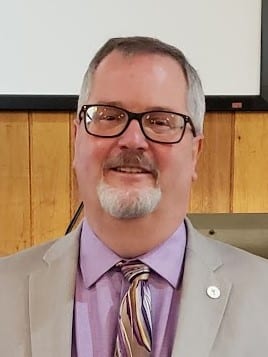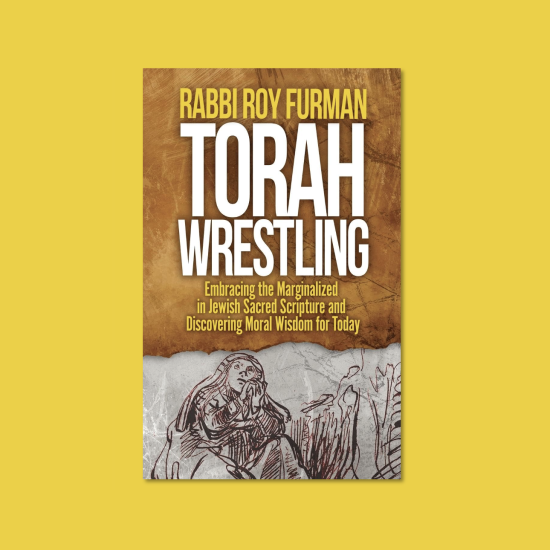

BRAVING DIFFICULT DECISIONS: What to Do When You Don’t Know What to Do. By Angela Williams Gorrell. Grand Rapids, MI: Wm. B. Eerdmans Publishing Company, 2025. XX + 194 pages.
Decision-making would be a lot easier if decisions were easy to make. I suppose if you believe that God makes them for us, then it really doesn’t matter. Whatever happens, happens, because God decided everything beforehand. I don’t even think most strict predestinationists believe that to be true. Whatever role we believe God plays in our decision-making, such decisions can be difficult. So, “What do you do when you don’t know what to do? That is the question Angela Williams Gorrell explores in Braving Difficult Decisions.

Robert D. Cornwall
Angela Williams Gorrell currently serves as a speaker and consultant while being an ordained minister with the Mennonite Church USA. She has been a professor at Baylor University, Yale University, and Fuller Theological Seminary, where she earned her Ph.D. in Practical Theology. I know her from two previous books: The Gravity of Joy (Eerdmans, 2021) and Always On: Practicing Faith in a New Media Landscape (Baker Academic, 2019). The latter book was honored by the Academy of Parish Clergy as its Book of the Year in 2020 (I chaired the committee that made that selection). So, when I saw that Gorrell had another book available, I asked to review it.
Gorrell is a compelling author who brings her expertise in practical theology together with her own personal experiences to the table. In Gravity of Joy, Gorrell developed a theology of joy in the context of personal grief and sadness. In Braving Difficult Decisions, she brings her expertise as a practical theologian together with her own experiences of having to make difficult decisions. These decisions include a divorce and leaving behind a professorship she was on track to receive tenure. She doesn’t only rely on personal experience, since she made use of numerous interviews with others who have faced difficult decisions. In doing so, she discovered that she wasn’t alone. Based on her research, she offers the reader a word of encouragement as they face difficult decisions, as well as guidance on how to make them. She notes that her “goal is not that you reach the same decisions as me or the other people featured in this book, but that you learn how to take your own journey into and through difficult decisions.” (p. xvi).
Each of the chapters begins with a guiding question that sets the conversation that takes place in the chapter. Thus, in Chapter 1, which is titled “Stirring,” the question involves asking what is happening in one’s life. Here, the question has to do with feelings when you don’t know what to do. It is a question of feeling conflicted, treading water, feeling exhausted, and depressed. Many decisions are made in such contexts, and those feelings must be dealt with before decisions can be made. The process may require bringing others into the conversation, people who can journey with you. The second chapter is titled “Surrendering: When You Feel Worried, Stuck, Powerless.” The question here is “Where do I start?” To surrender means opening up to the journey, especially to God. She writes that as we detach from particular outcomes, negative what-ifs, and predictions, we offer ourselves to new possibilities, positive what-ifs, and prudence: “As we surrender, we open ourselves to wisdom” (p. 28).
Chapter 3 is titled “Seeking: When You Don’t Know Who to Trust and Listen To.” The guiding question here is an important one: “Who should I ask for advice?” Here, the concern is who is best equipped to be our companions on the journey. She suggests that the best companions, the people we can trust most, will be those people we can be our authentic selves around. Who are the people we feel free to share hopes and fears, and questions, and who will not be judgmental? These are not people who will tell us what we want to hear, but who will be honest and gracious.
The next question comes in a chapter titled “Sensing: When You Feel Difficult Feelings” (Chapter 4). So, how do we deal with our feelings? As we ask this question, we must be aware of false binaries such as “am I being emotional or rational?” Feelings play an important part in decision-making and can’t be ignored. The next step in this process, and decision-making is a process, involves “Summoning: When You Are Struggling to Imagine the Future” (Chapter 5). Here, the question is one of identity: “Who am I?” To answer this question, we may want to draw on personal stories from our lives or from the communities we inhabit. This is where we ask what inspires us. We can also draw on our faith stories, including the promise found in scripture that God made us good. She reminds us that “God is reaching out to you, right now, just as you are. Right in the middle of the paragraph, you are living, you are loved unconditionally. Full stop. No matter what decisions or transitions you have made or will make” (p. 76). In answering this question, we become readier to face the future.
However, we may have to do a bit of “Shedding: When Your Past Weighs on You” (Chapter 6). In asking why we can’t move forward, we may have to let go of things that hold us back. Not only will there be things from the past that need to be jettisoned, but we may have to do some “Sifting: When You Have Contending Convictions” (Chapter 7). In other words, how do we know what is true? Perhaps we come to our decision-making having to deal with differing perspectives, both of which may be true, but which need to be sifted. She advises us to “hold your beliefs lightly. Let them change when they need to” (p. 97). Perhaps the key to decision-making is to embrace the “and” rather than the “but.” That is indeed good advice.
The next step involves “Selecting: When You are Choosing Between Different Values” (Chapter 8). Here, the question has to do with “What is mine to do”? As we answer this question, we need to address the values that might be at stake in our decisions. To do that, she encourages us to do a values inventory. What are our values? How might they be at stake in our decision-making? Chapter 9 is titled “Searching: When You Are Experiencing Analysis Paralysis.” It is easy to get caught up in analysis when making big decisions. Thus, we must ask the question: “What am I being led to do?” As we ponder this question, she suggests we not focus on specific outcomes, but focus “on the bigger picture of what are lives are looking forward and the kind of people we are trying to become” (p. 121). Here we need to consider what matters most to us, especially as Christians. That involves filtering out things that don’t answer that question.
As we near the conclusion of the book, Gorrell raises the issue of “Striving: When Your Decision Risks Judgment, Hurt, and Relationships” (Chapter 10). Our decisions can indeed carry risks with them, which often causes us to experience analysis paralysis. But we need to ask the “what if” question. What if there is pushback and judgment? What if the decision we make affects not only our lives, but the lives of others? These are important questions to address. Then, we reach the final chapter, which Gorrell titles “Sated Joy: When You Want to Keep Moving Forward” (Chapter 11). In her previous book, The Gravity of Joy, she developed a theology of joy in the context of suffering and sorrow. She draws on that theology in this final chapter as she asks, “How do I live into my story?” Here she reminds us that no matter the decisions we make, God loves us and is with us, always, for God is trustworthy.
The message that comes through the book is that decision-making is often difficult. It is risky. It requires thought and prayer and trust — trust in God, trust in companions on the journey, and trust in ourselves. As I read Angela Williams Gorrell’s Braving Difficult Decisions, I realized that at least for a moment, I have reached an age where I face fewer decisions. I am retired, and for now, I am healthy and financially secure. That’s not something everyone can say. I could have used this book earlier in life, and I may need to draw on it later in life. Nevertheless, having had to make difficult decisions at different points in my life, I see in Braving Difficult Decisions a resource that can help people move through the process so they can make decisions, especially when we’re not sure what to do. It is good to know that while our decision-making may involve risks, we can make them knowing that God is with us. But, as we do so, we’ll want to draw from our values, for they may be the key to making decisions that lead to joy, even if those decisions are difficult to make.
This review originally appeared on BobCornwall.com.
Robert D. Cornwall is an ordained minister in the Christian Church (Disciples of Christ). Now retired from his ministry at Central Woodward Christian Church (Disciples of Christ) of Troy, Michigan, he serves as Minister-at-Large in Troy. He holds a Ph.D. in Historical Theology from Fuller Theological Seminary and is the author of numerous books, including his latest “Second Thoughts about the Second Coming: Understanding the End Times, Our Future, and Christian Hope” coauthored with Ronald J. Allen. His blog Ponderings on a Faith Journey can be found here.

